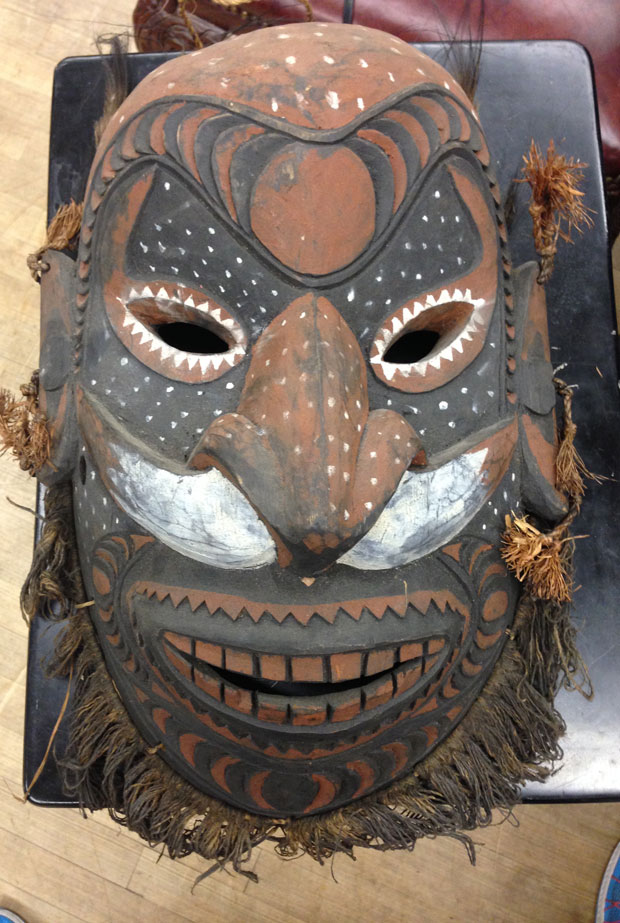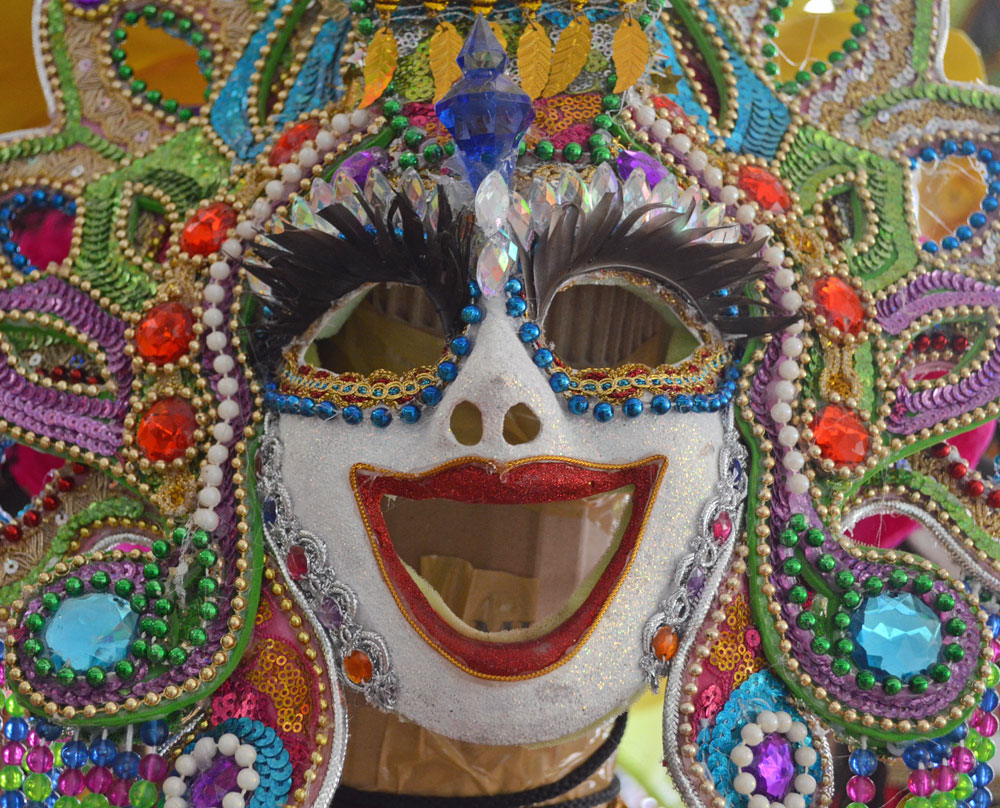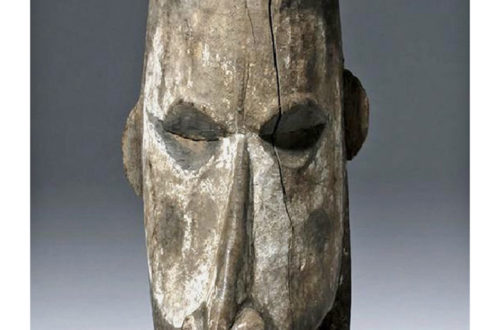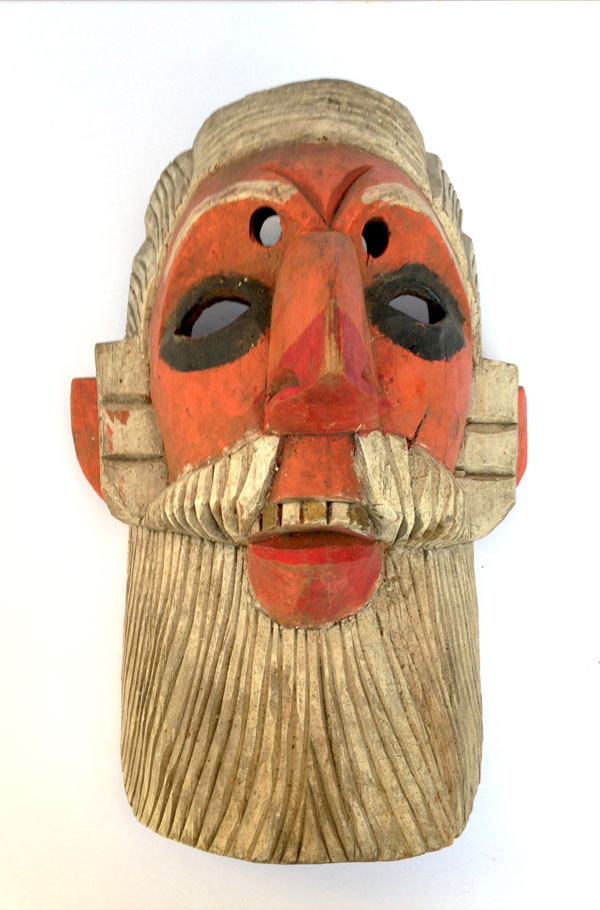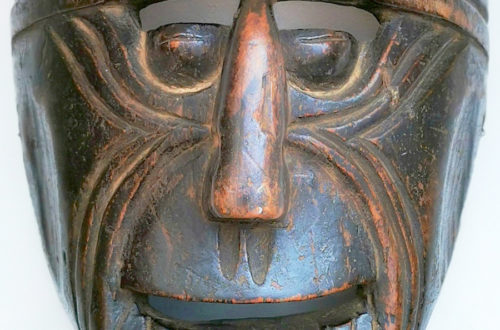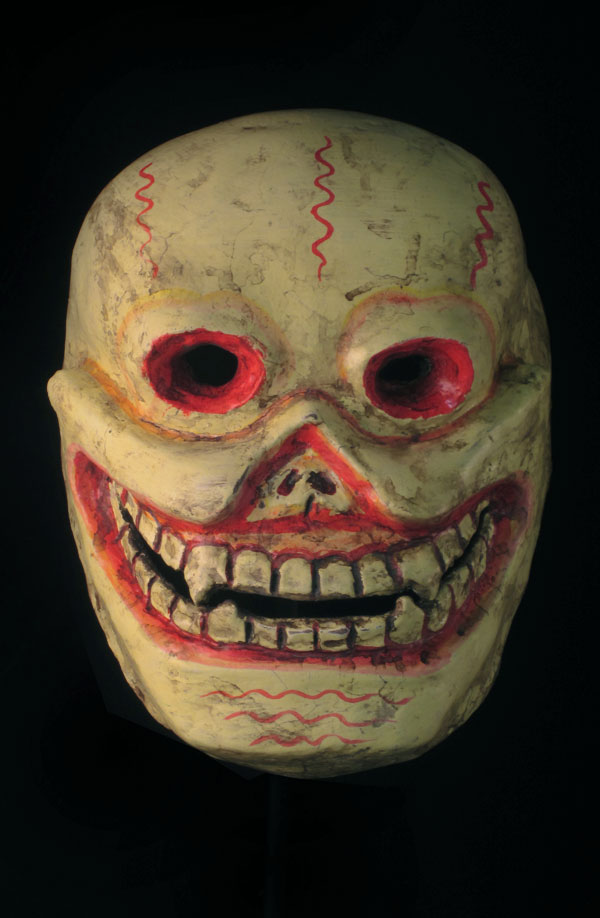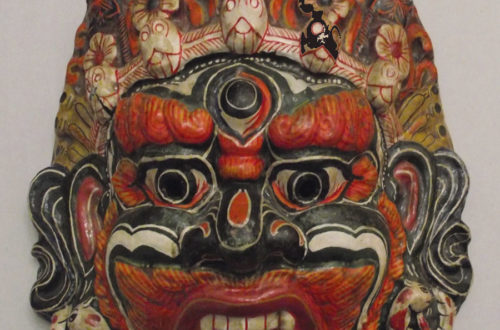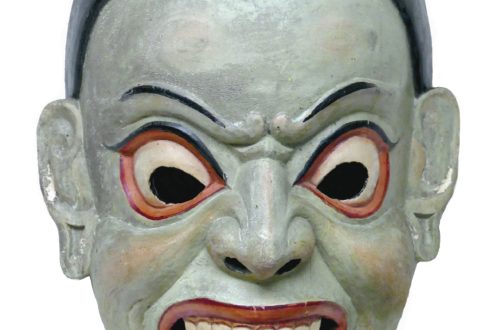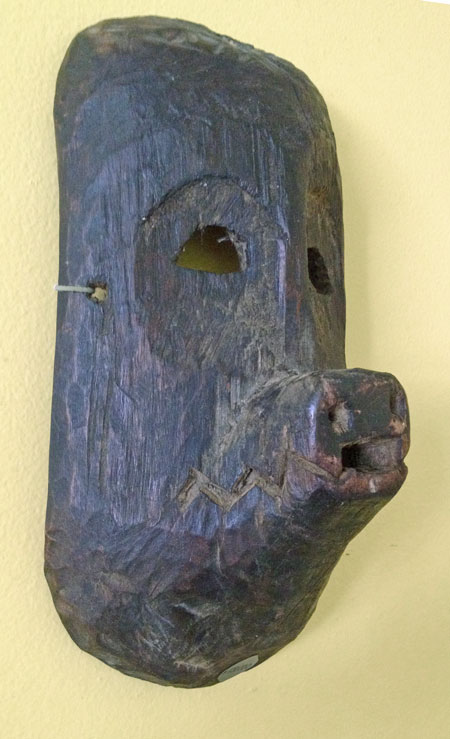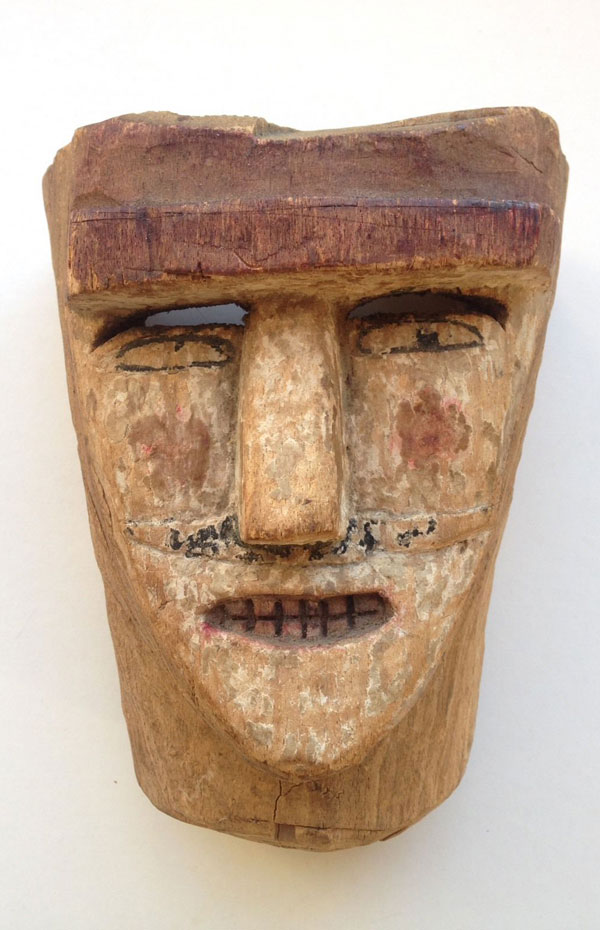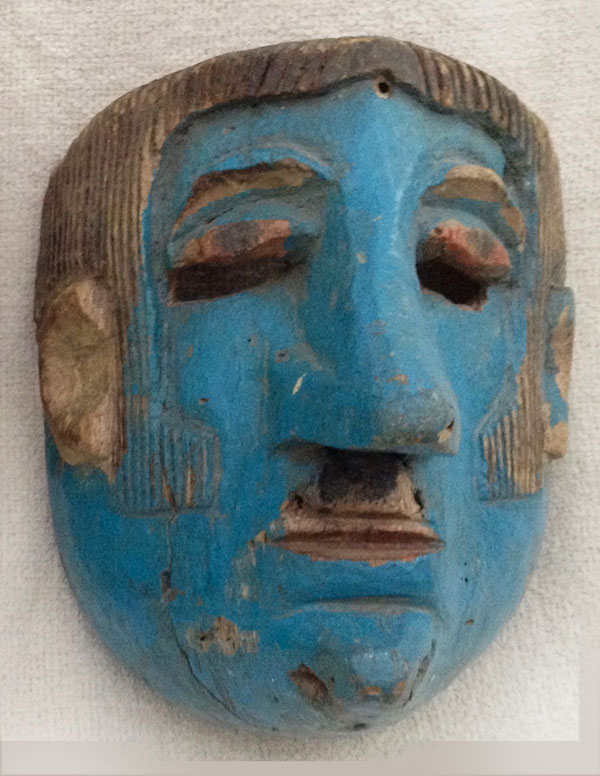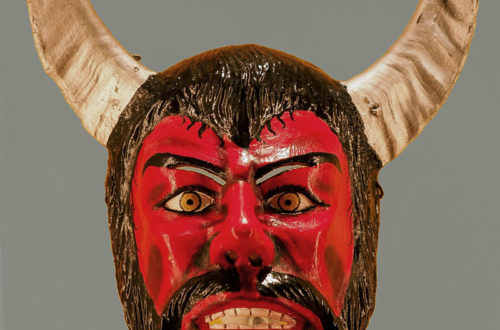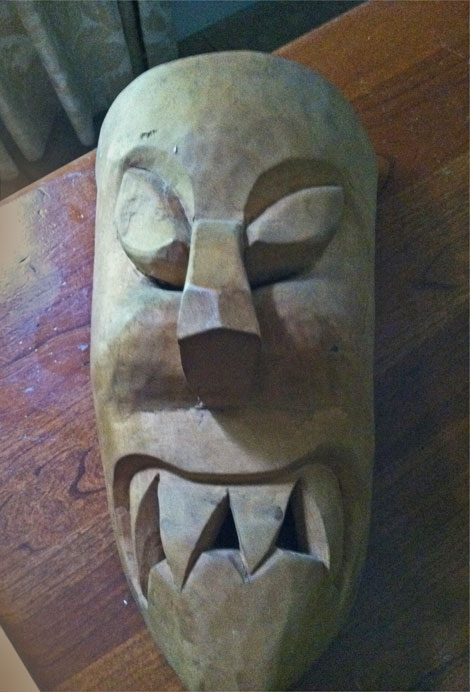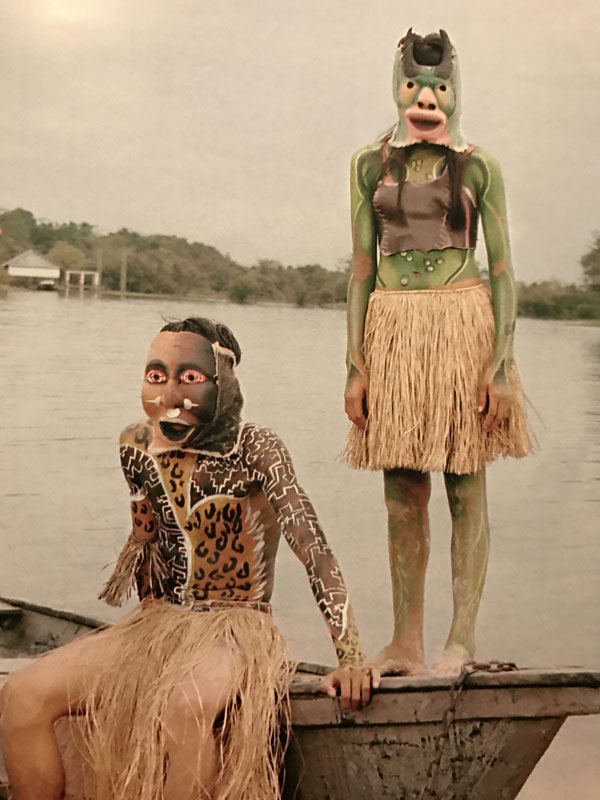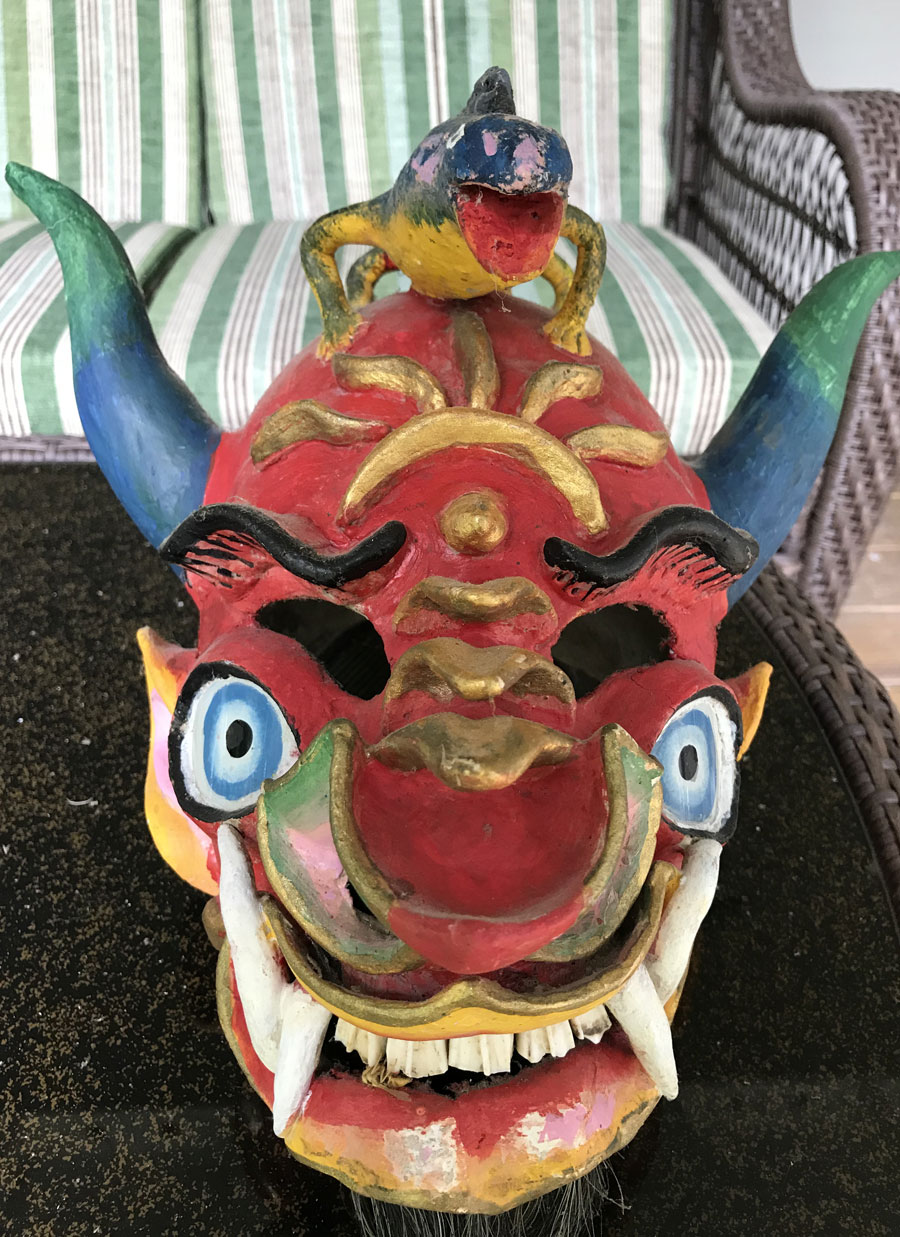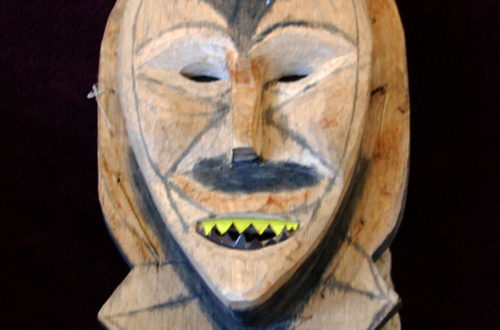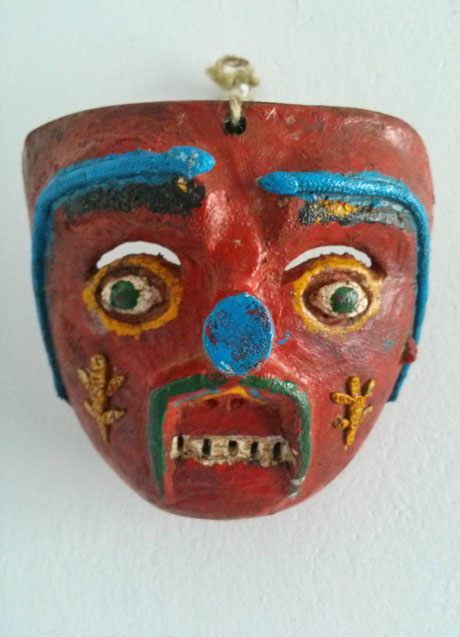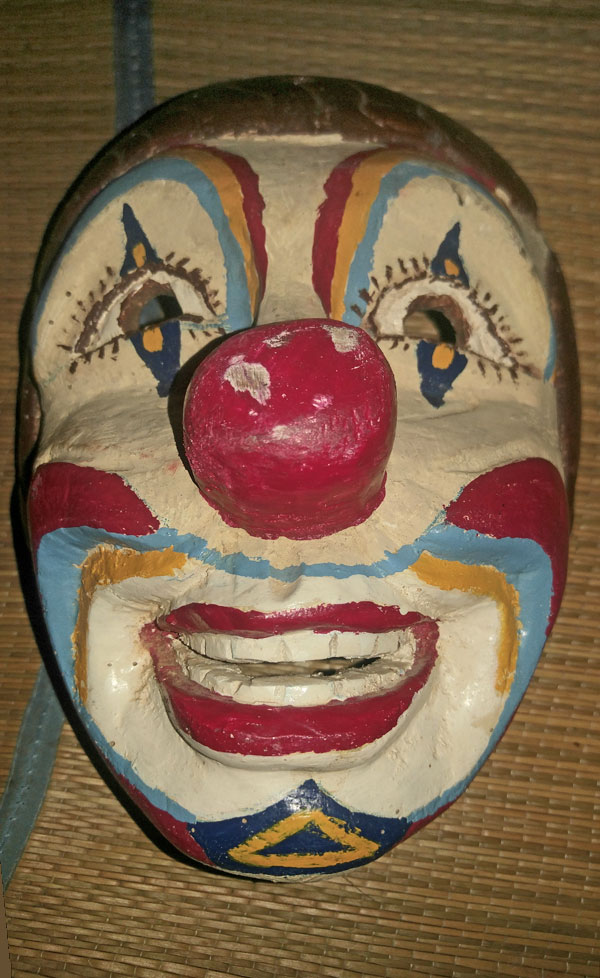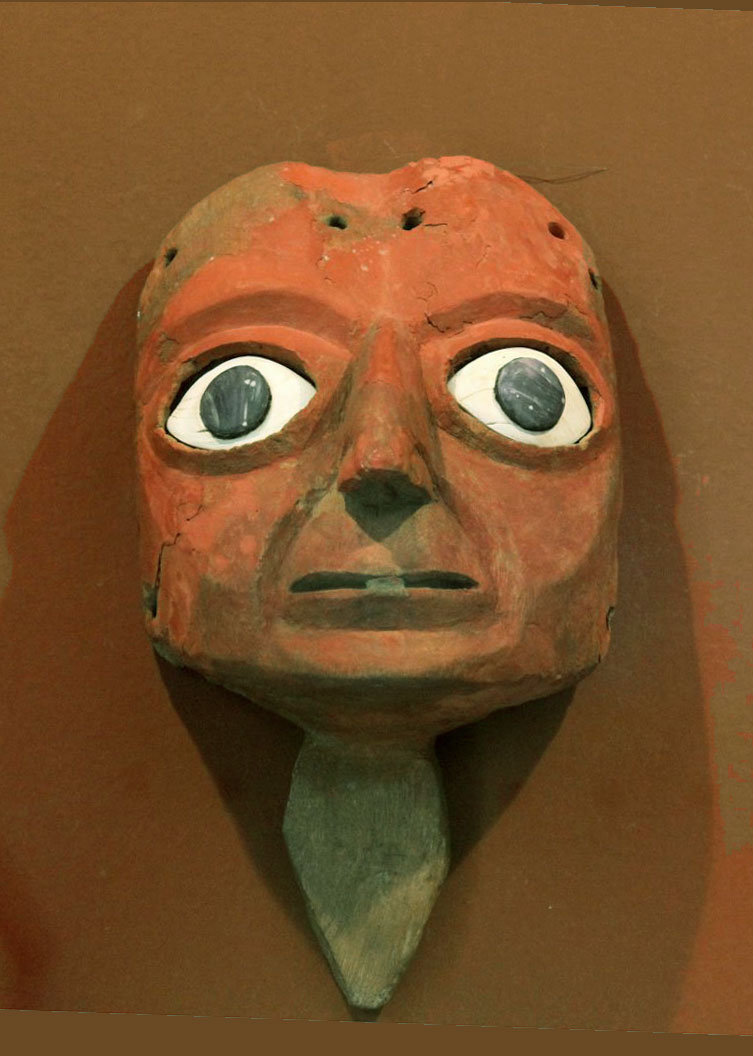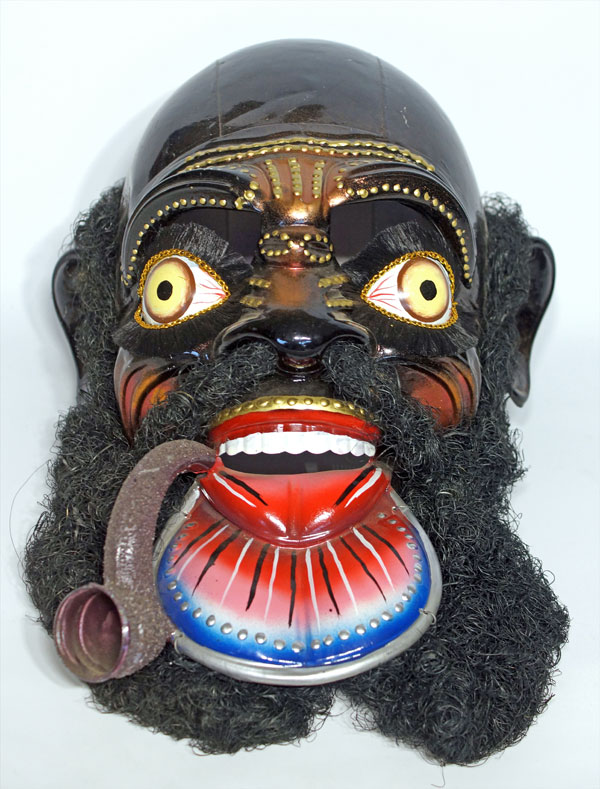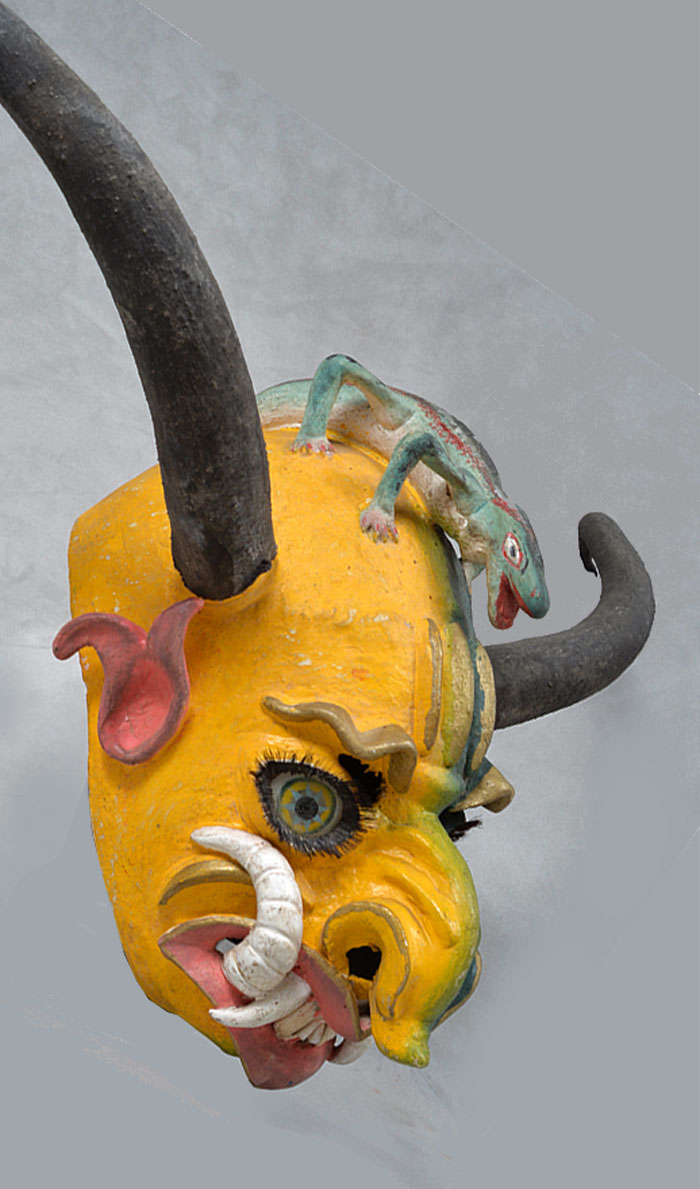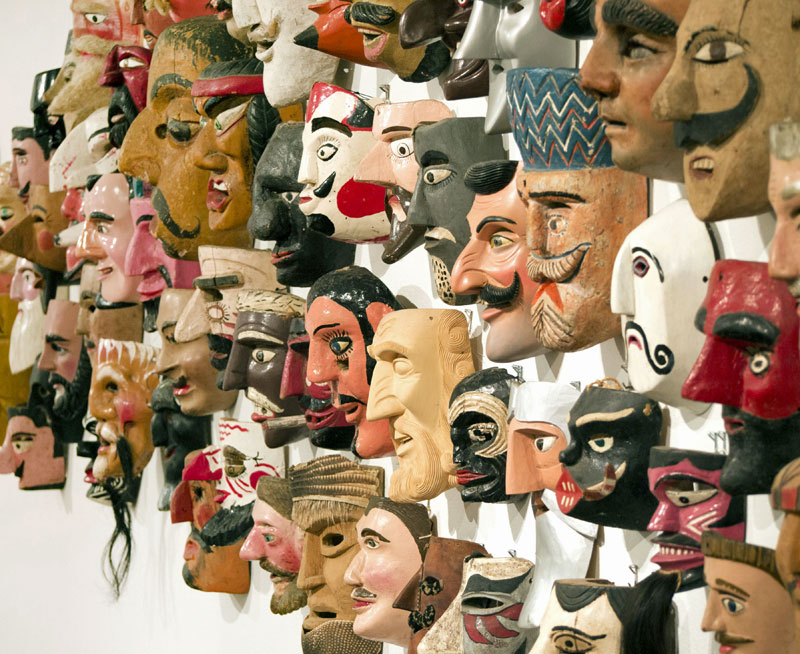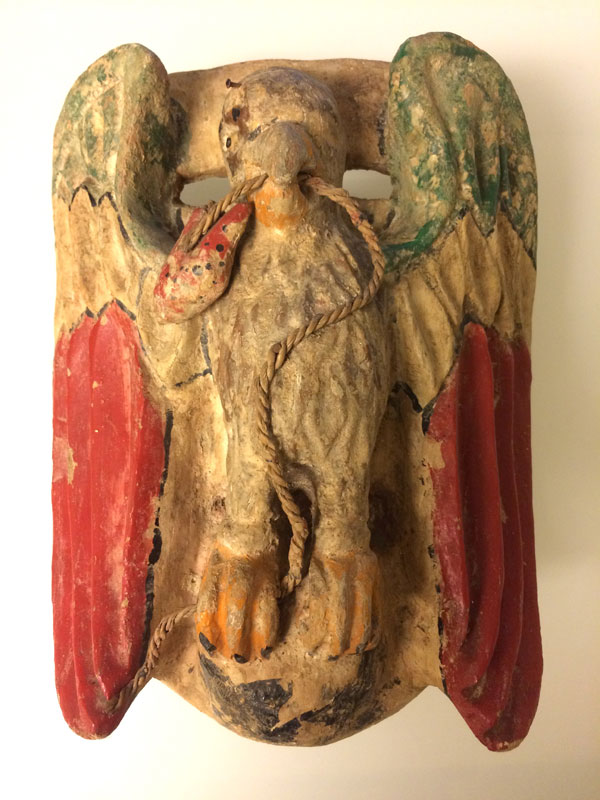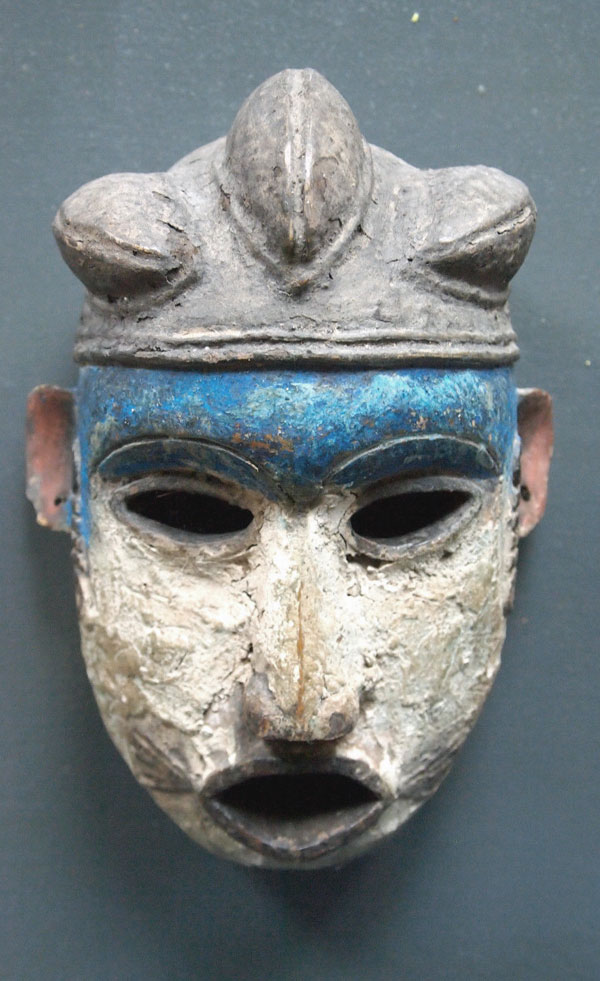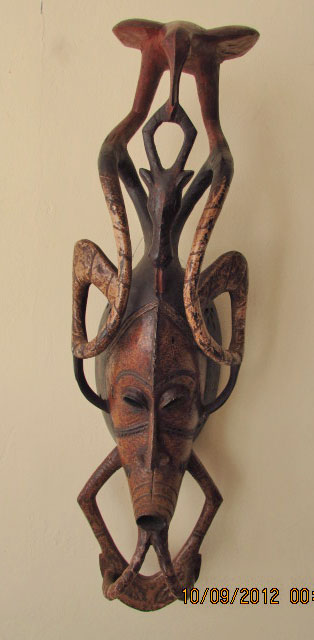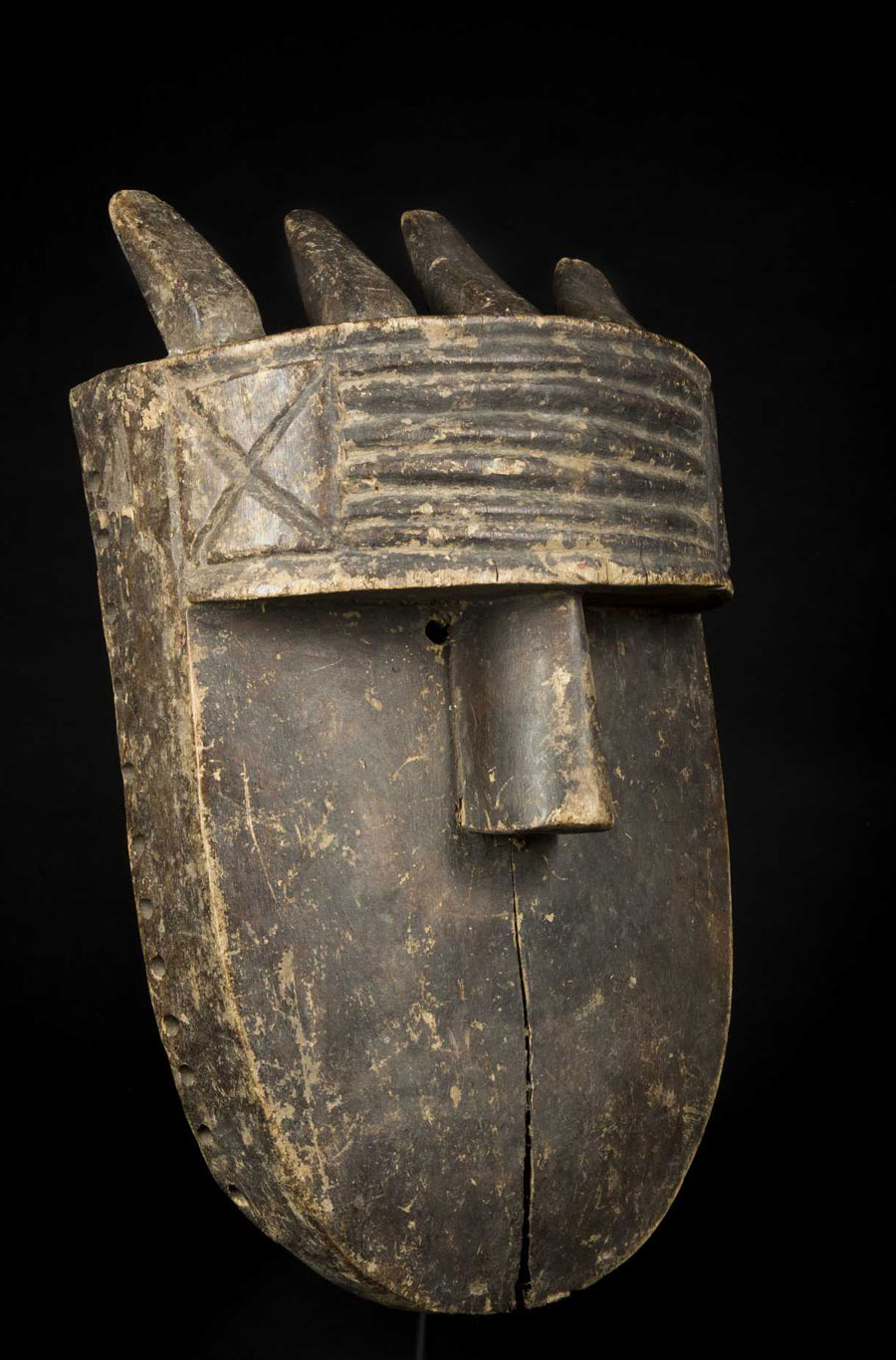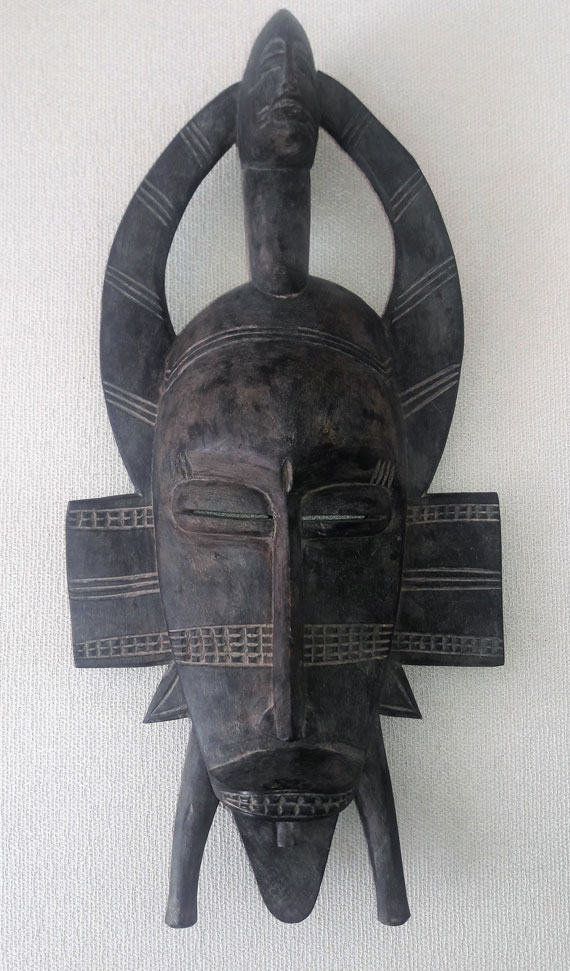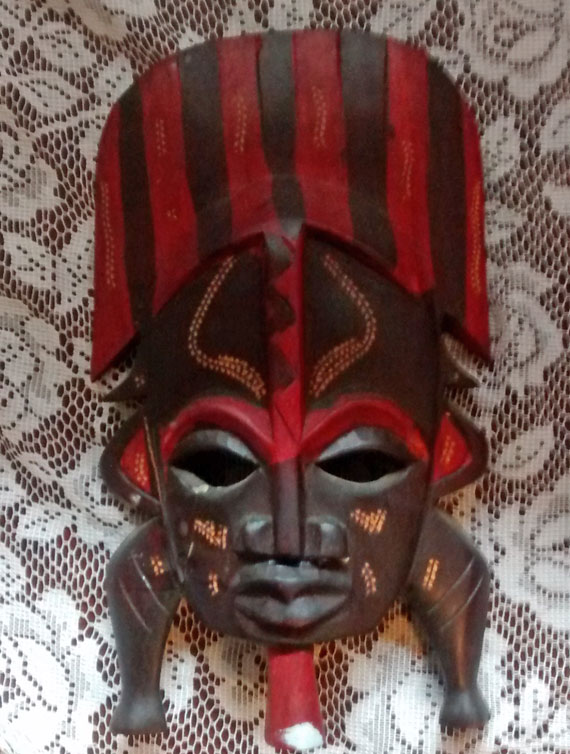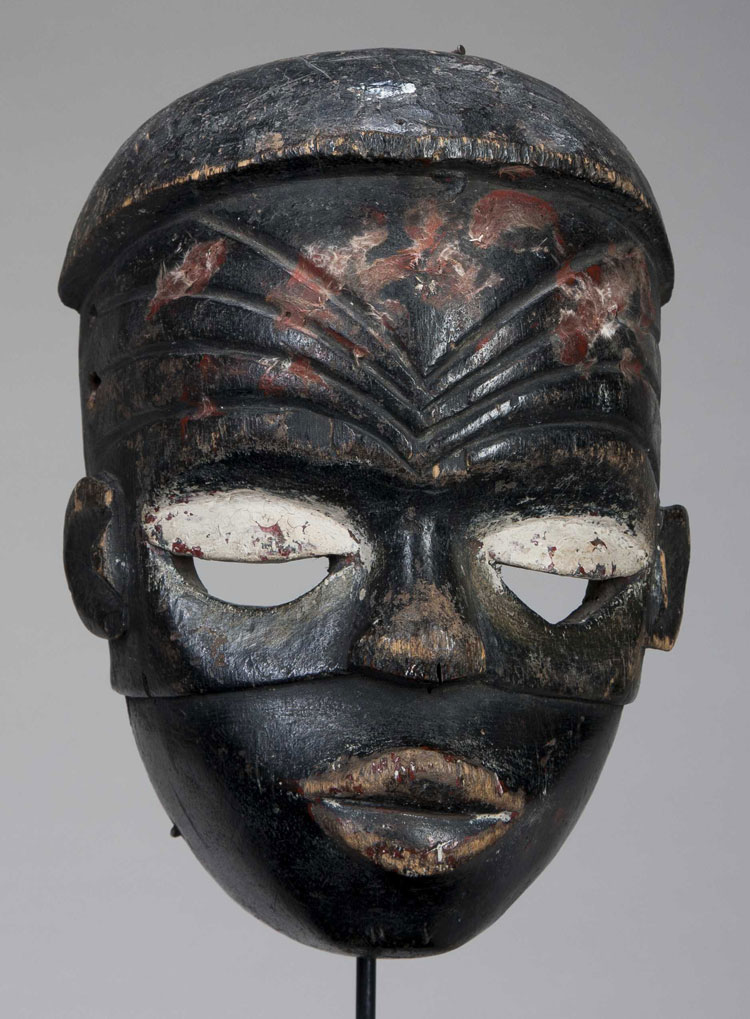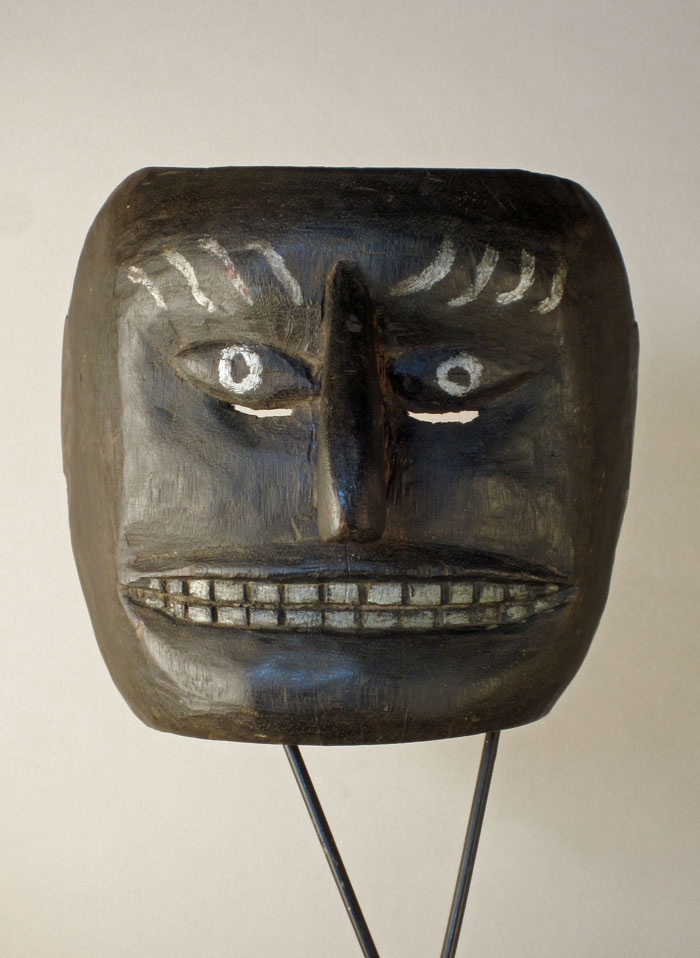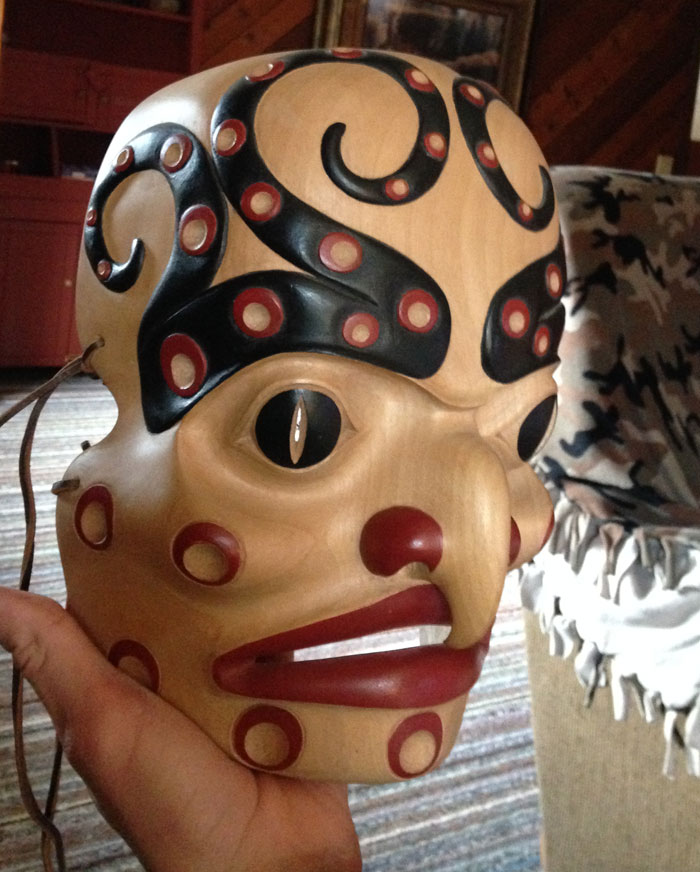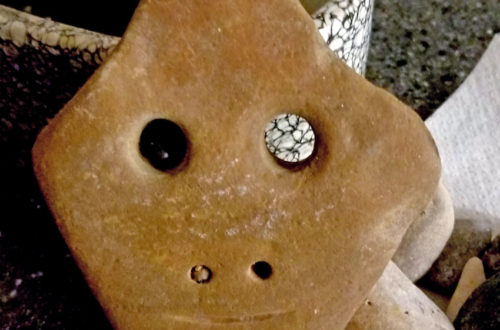Q: Came across your site trying to identify a mask. It was given to my dad a long time ago by a friend who liked to travel, but he can’t remember where it’s from or anything else about it. Was hoping you could help. It’s about 17″ tall and 10″ wide. A: Tago masks represent the ghosts of important ancestors. Every ten to twelve years, a year-long series of ceremonies remind each clan of its ancestral connections, with two major performances celebrating the arrival and departure of the ghosts. When men wear the tago mask, a taboo is placed on all coconuts for one year and there must be…
-
-
Pretty cool Guatemalan mask
Q: I have 2 mystery masks. Here is the first one. Paid $18 for a antique extravaganza. Could it be from Guatemala? Mexico? It’s pretty cool. Gena, 1100 A: I picked this one to post. Indeed it is a cool mask. Even though a cheaply made commercial product, it looks so Guatemalan. You know instantly it could come from nowhere other than the mountains of Central America. Of course, most serious collectors don’t want “tourist junk” on their walls. Perhaps some collectors would be revolted by this guy (especially anthropologists), but I think the mask is a keeper! C Save Save
-
Himalayan skull masks
I was just looking at this entertaining skull mask. Skulls are a subject for masquerade in cultures all over the world. This one is obviously from the Himalayan region. You can always recognize this because of the way the nose, cheek bones and many teeth are sculpted. It is made of papier mache which is light-weight and cheap. Most of the skull masks made for use in dance or ceremony nowadays utilize that material. However, this particular one was antiqued for sale to the tourist trade. I’m also posting two other skull masks from page 38 of my book, Masks of the World, that were carefully carved out of wood. …
-
Hard to identify Mexican mask
Q: Here is one of my latest Mexican mask acquisitions… appears to be turn-of-the-century. Do you agree? There is considerable aging… in fact I think I may have fell in love with the aging rings of the wood more than anything. Idea on character? I cant discern if its a hat he is wearing or poking fun at oversized eyebrows to be honest. I also find the two holes at the top of the mask interesting… I wonder what would have once been mounted there. Similarly, it looks like there are square pegs on top to bottom of the mask… again, not sure how that might have been used. Mask measures…
-
Recent Amazon Indian masks and costumes
Q: Here are some photos of masquerade of the Cocama people in Santo Tomas, Peru. The pics are in the National Geographic that arrived yesterday, so they are recent. Hans, 1097 A: I love seeing examples of masks that demonstrate how folk art continues to evolve. I don’t believe that the Cocama people would have made masks and costumes like these 50 years ago. You can read more about this in the January 2017 issue of Nat Geo.
-
Another Payaso from the mountains of Ecuador
Q: I wanted to see if you had any info on this mask. Joe, 1096 A: This is all that Joe told me, but his three photos were helpful and I recognized the mask immediately. It is a Payaso (clown) from the Indians of Ecuador. There is a different one shown on our blog archive (category “South America”) that was posted Nov 15, 2016. Please look it up so you can compare the two, and learn more about how them. This one is crudely made and appears to have been used. The one in the archives is new and more carefully carved and painted. A- Save
-
Interesting Indian portrait
Q: I purchased this mask in Creel, Mexico in 1989. The unusual thing about this mask is that while the Tarahumarans have always carved masks, I was told it was not common for them to create masks that depicted themselves. The other masks in the shop were all of white men. It is dated and signed. Robin, 1095 A: (Later this was written to Robin.) I forwarded your photograph to a former ASM Curator, Tom Kolaz, who has studied and written about Tarahumara masks for decades. He says the mask was made by Irmo Armendariz who used to live near Roseachic, Chihuahua. He is not Tarahumara but the area had…
-
A mystery from Africa
Q: Je suis en possession de ce masque mais je n’ai aucune idée de sa provenance et s’il a une quelconque valeur ou simplement décoratif. Vous est-il possible de m’éclairer sur le sujet ? Il mesure 24cm/9,5 inches. Jean Luc, 1094 A: My wife translated this. Jean Luc wants to know what the mask is. Of course… and so do I. Dear fellow collectors, please give me your thoughts. The photographs are good. It doesn’t look like airport art. If the patina is fake, it would have taken a lot of time and effort. B+ Save Save
-
Kpelie mask, Senufo people, Ivory Coast
Q: This mask is one of a pair. The other is of a similar size and design but the details are slightly different. Both are approx. 16″ high. I’m pretty sure I bought them 15-20 years ago at a thrift store in Miami for approx. $50 for the pair. I doubt they’re valuable, but I plan to mount them on stands and would like to identify their area of origin. Appreciate your opinion! Tim, 1093 A: I have posted a Kpelie mask about a year ago. It is #982 in the “Africa” category of the blog archives. Yours is an average reproduction of a classic West African traditional mask that…
-
Unidentified Eskimo mask
Here is a mask I would like to know more about. In my book, Masks of the World, it is on page 94. The description reads: Unusual mask– Alaska or Canada, 6.7 inches, carved red cedar We saw a crude Tsimshian mask that was cylindrical in shape like this one, and had a long nose attached to the face, but was otherwise different. It also has an Inupiat or Yup’ik feeling. There are no string holes and the nose is nailed in place. The paint is aluminum so it is probably 20th century. And don’t be afraid to tell me if you think it is something completely different. I am…
